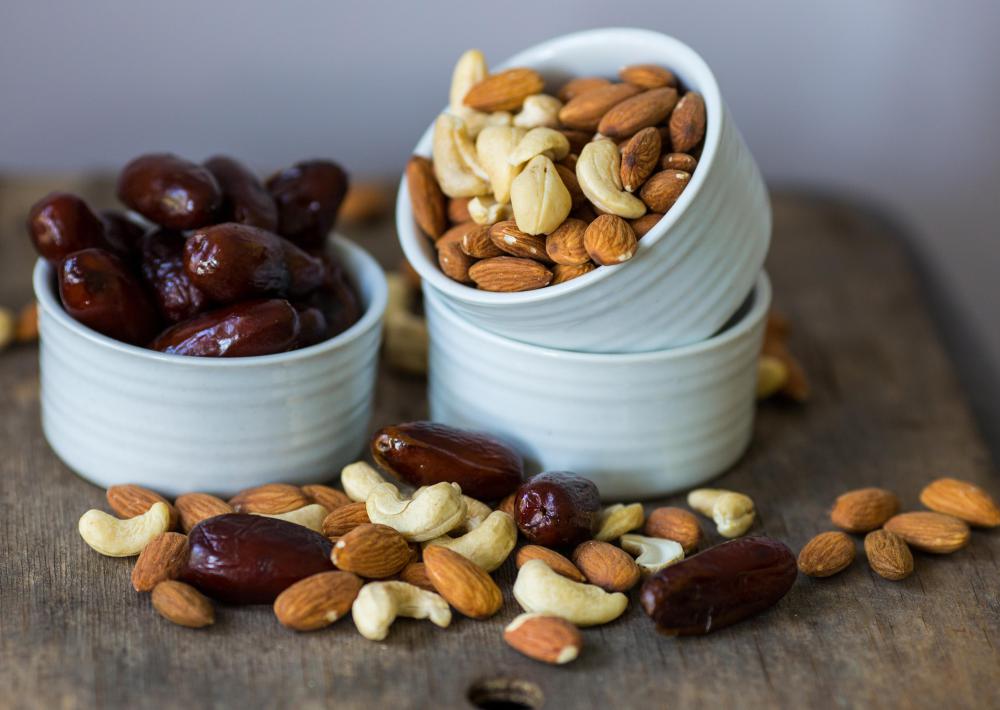At WiseGEEK, we're committed to delivering accurate, trustworthy information. Our expert-authored content is rigorously fact-checked and sourced from credible authorities. Discover how we uphold the highest standards in providing you with reliable knowledge.
How is a Portion of Food Determined?
A portion of food is determined by how much food a person puts on his or her plate. There is no real unit of measurement for portion size, since it is a fairly arbitrary amount that is typically determined by how much food a person believes he or she will eat. The term is also used in certain dietary regimens to refer to the amount of food a person should be eating, in which case it is often measured in typical units of measurement such as cups or grams.
One of the most confusing aspects about understanding how a portion of food is determined is the use of the terms “portion” and “serving.” A serving, sometimes called “serving size,” is what is recommended by the United States Department of Agriculture (USDA) and is typically based upon the amount of a certain food type that can be healthily consumed at one meal or throughout the day. Serving sizes can also be a measurement of about how much the manufacturer of a food product estimates a person will eat in a single sitting.

The USDA has studied different diets and the caloric needs of men and women, and has used this information to establish the appropriate serving sizes for different types of food. Typically, the USDA recommends that a single portion of food should be about one cup (250 ml) of grains such as pasta or rice; about one half of a cup (125 ml) of chopped fruit or vegetables, or a whole medium piece of fruit or vegetable; about two to three ounces (55-85 g) of proteins such as meat or beans; and only about one tablespoon (15 ml) of oil or fat. These are only single portions, and more than one portion of each is typically required for healthy eating throughout a day.

Portion control is the exercise of restraint by a person when choosing the portion of food he or she places on his or her plate or eats. Since the USDA determines serving sizes based on healthy eating habits, most people can ensure they are eating healthily by following these serving recommendations as portion guidelines. Children under two years old and women who are pregnant or breastfeeding, however, will have different dietary needs.

There is also a phenomenon referred to as “portion distortion,” in which the portion of food a person places on his or her plate seems reasonable, but is in fact either significantly more or less food than he or she should be eating. This can be the result of different factors, such as restaurants serving multiple portions of food on a single plate, or someone simply not fully understanding how much he or she should be eating. In order for someone to better control the portion of food he or she eats, visualizing measured amounts in other ways can be helpful.

For example, the USDA recommended portion of food for proteins such as meat is easy to picture by considering a piece of meat about the size of a standard deck of playing cards, or the size of a person’s palm when his or her hand is held open. A single serving of fruit or vegetables is about the size of a closed fist or a baseball. Oil should be kept to a minimum, and solid fats such as butter or margarine should be used only minimally. Fats also include nuts and seeds, for which a single portion is considered to be about a handful.
AS FEATURED ON:
AS FEATURED ON:
















Discuss this Article
Post your comments